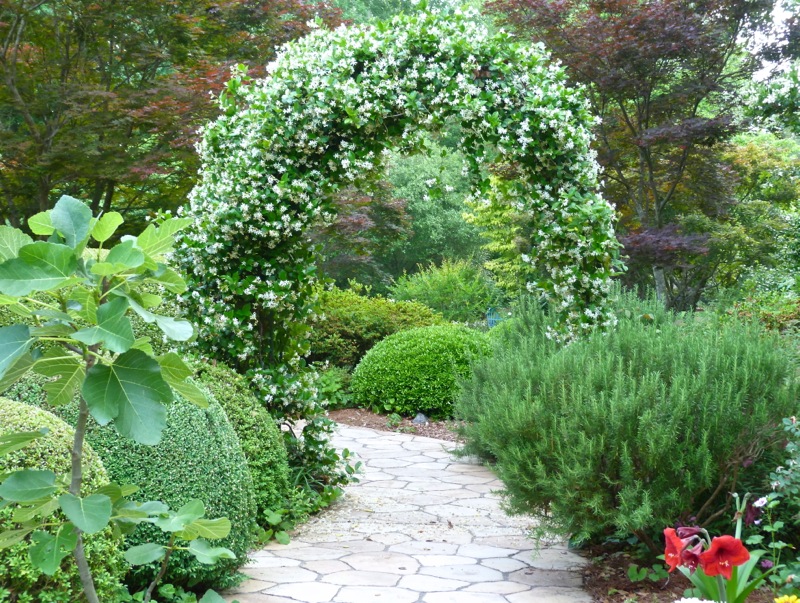My Sweet Daphne
 Sunday, January 12, 2014 at 7:45PM
Sunday, January 12, 2014 at 7:45PM Winter daphne will seduce you. In January and February, just when you are desperate for flowers, this beautiful shrub begins to appear in garden centers. Daphne odora may have solid, glossy green leaves (Daphne odora 'Alba'), or it may be variegated (Daphne odora 'Marginata'). All have wondrously fragrant winter blooms that occur, depending on the weather, from early January to early March.
My Daphne odora 'Marginata' has glossy leaves with creamy edging. The buds appear in January and are rosy pink.
 The blooms are white with a hint of pink and are heavenly fragrant.
The blooms are white with a hint of pink and are heavenly fragrant.
However, you should know a few things about this shrub before you buy it. These plants are not long-lived, perhaps living a decade or so, though in the perfect environment they may live longer. Daphne has a finicky reputation that is well-deserved. They are known for sudden death spiral. One day a shrub begins to look a bit droopy. A week later it is stone-cold dead.
Daphnes grow in hardiness zones 7-9. To keep a daphne happy, one MUST provide excellent drainage. They will suffocate in clay soil. The soil should be fertile with a slightly acid to slightly alkaline pH. Plant them somewhat above ground, atop a mound. They should be watered regularly, but remember: the soil must drain well. Gravelly, sandy soil may work, or add lots of soil conditioner to other types of soil. Mulch well. They like high, filtered shade or morning sun. They must be sheltered from wind and hot afternoon sun. Daphnes require minimal or no pruning and can grow up to 4 feet tall by 5 feet wide. They don't like to have their roots disturbed; so once planted, it is best not to transplant them.
I planted my winter daphne in a pot, in a good organic soil mixture with lots of soil conditioner. In winter I move the pot from its place in the garden to the patio. Under the eaves by our large glass kitchen door, it is protected from frequent drenching winter rains; and we can enjoy the blooms while we eat. After it finishes blooming in early spring, I move it back into the garden. I fertilize with an organic fertilizer when it begins to put out new growth. My daphne is several years old, and so far it is happy, though I wonder what will happen when I have to move it to a larger pot.
Daphne odora has completely seduced me, and if mine dies, I am sure to get another. I may even try my luck with planting a few out in the garden, as I have seen some older daphnes in my area growing successfully in the ground. If I give them the cultural requirements they crave, and if I talk to them sweetly, maybe they won't die. Maybe.
 Permalink
Permalink  fragrant garden,
fragrant garden,  winter daphne,
winter daphne,  winter garden in
winter garden in  shrubs,
shrubs,  winter garden
winter garden 

